Search Engine Optimization (SEO) has long been the cornerstone of digital marketing success — but in 2025, it’s a different game entirely. Google’s algorithms are more sophisticated, competition is fiercer, and AI-powered search engines like ChatGPT, Gemini, and Perplexity are transforming how people discover information online.
Ranking on Google is no longer about stuffing keywords into your pages or chasing quick hacks. It’s about mastering core SEO fundamentals, building real authority, delivering exceptional user experiences, and adapting your strategy for the AI-driven search era.
In this guide, you’ll learn exactly how to master SEO to dominate Google rankings — from the foundational four pillars of SEO to advanced AI optimization tactics like Answer Engine Optimization (AEO) and Generative Engine Optimization (GEO). We’ll also cover the best tools, ethical backlink strategies, and conversion-focused techniques so your rankings actually translate into measurable business growth.
Understanding Core SEO Fundamentals
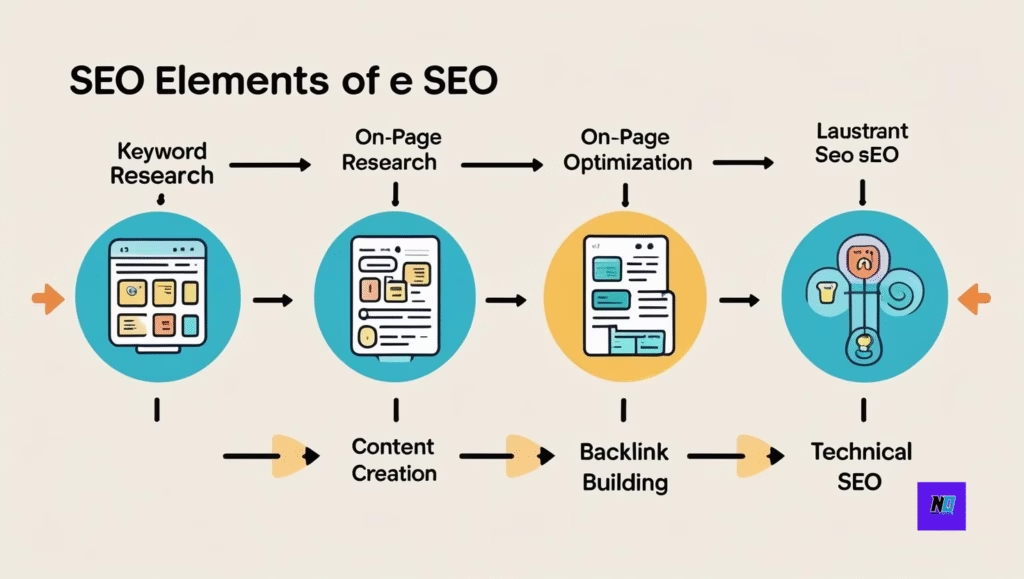
What is Core SEO?
Core SEO refers to the essential, non-negotiable practices that form the foundation of any successful search engine optimization strategy. Think of it as the “engine” of your website’s visibility — without it, no matter how great your content or design is, your site will struggle to rank.
When we talk about core SEO, we’re talking about a mix of technical improvements, on-page refinements, and content quality that tells Google:
“This website is trustworthy, relevant, and worth showing to searchers.”
Let’s break it down.
1. Keyword Research — Knowing What Your Audience Searches For
At the heart of SEO is understanding what people are searching for in your niche. This isn’t about guessing keywords — it’s about data-driven research.
- Why it matters: If you don’t know your audience’s exact search terms, you might create content no one is looking for.
- How it works: Use tools like Google Keyword Planner, SEMrush, or Ahrefs to find keywords with a balance of high search volume and achievable competition.
- Pro tip: Focus on search intent — is the person looking for information, comparing options, or ready to buy? This helps you tailor your content accordingly.
2. On-Page Optimization — Making Every Page SEO-Friendly
On-page SEO ensures each individual page on your website is optimized for both search engines and users.
Key elements include:
- Title tags: Your page title should include the main keyword and be enticing enough to earn a click.
- Meta descriptions: A short summary that encourages users to visit your page.
- Headings (H1, H2, H3): Break up content logically and use keywords naturally.
- Internal linking: Link to other relevant pages on your site to guide users and help Google understand your site’s structure.
- Image optimization: Use descriptive file names, alt text, and compressed images for speed.
Example:
If you have a blog post about “Best Coffee Beans for Espresso,” your title could be:
“Best Coffee Beans for Espresso in 2025: Expert Picks” — keyword included, but still appealing to the reader.
3. Content Creation — Providing Real Value
Google rewards content that solves problems, answers questions, and keeps readers engaged.
Content is not just text — it’s articles, guides, videos, infographics, and more that deliver genuine value.
- Quality over quantity: A 500-word fluff piece won’t beat a 2,000-word, well-researched guide.
- Freshness matters: Update old posts to keep them relevant.
- Match search intent: If someone searches “how to brew espresso at home,” give them step-by-step instructions, not a history of coffee.
4. Link Building — Earning Authority Through Backlinks
Backlinks are links from other websites to yours, and they’re a major trust signal for Google.
The logic is simple: if reputable sites link to you, you must be worth trusting.
- High-quality links: One link from the New York Times is worth far more than dozens from low-quality blogs.
- Ethical methods: Guest posting, creating shareable resources, building industry partnerships.
- Avoid shortcuts: Buying links or using spammy tactics can get you penalized.
5. Technical SEO — Making Sure Search Engines Can Access Your Site
Even the best content won’t rank if Google can’t crawl or index your site properly.
Key technical factors include:
- Site speed: Slow sites frustrate users and drop in rankings.
- Mobile optimization: Most users search on their phones; your site must be mobile-friendly.
- HTTPS security: A secure site (with an SSL certificate) is now a ranking factor.
- Structured data (schema): Helps search engines understand your content and can lead to rich snippets in search results.
In short:
Core SEO is the foundation. Without it, all other advanced strategies — from AI optimization to complex link-building — will fail to produce long-term, consistent results.
The Four Pillars of SEO
Think of SEO like building a house.
If the foundation is weak, it doesn’t matter how beautiful the walls or roof look — the structure will collapse.
The four pillars of SEO are those essential building blocks that keep your “SEO house” strong and stable:
- Technical SEO
- On-Page SEO
- Content
- Off-Page SEO
Let’s break each one down and explore why it’s critical for ranking success.
1. Technical SEO — The Framework That Holds Everything Together
Technical SEO is about making sure search engines can crawl, index, and understand your website without any issues.
If your site is slow, broken, or difficult for Google to navigate, even the best content in the world won’t rank well.
Key technical SEO tasks:
- Crawlability: Ensure Google’s bots can move through your site’s pages without hitting dead ends.
- Site Speed: Optimize images, remove unnecessary code, and use a good hosting provider.
- Mobile Optimization: Your site should work flawlessly on smartphones and tablets.
- HTTPS Security: Secure your site with an SSL certificate to protect users’ data.
- Structured Data (Schema): Add schema markup so search engines understand your content contextually, increasing the chances of rich snippets.
Example:
If you run an e-commerce site selling running shoes, technical SEO ensures Google can find your product pages, see your product descriptions, and display them in search results with price, reviews, and availability.
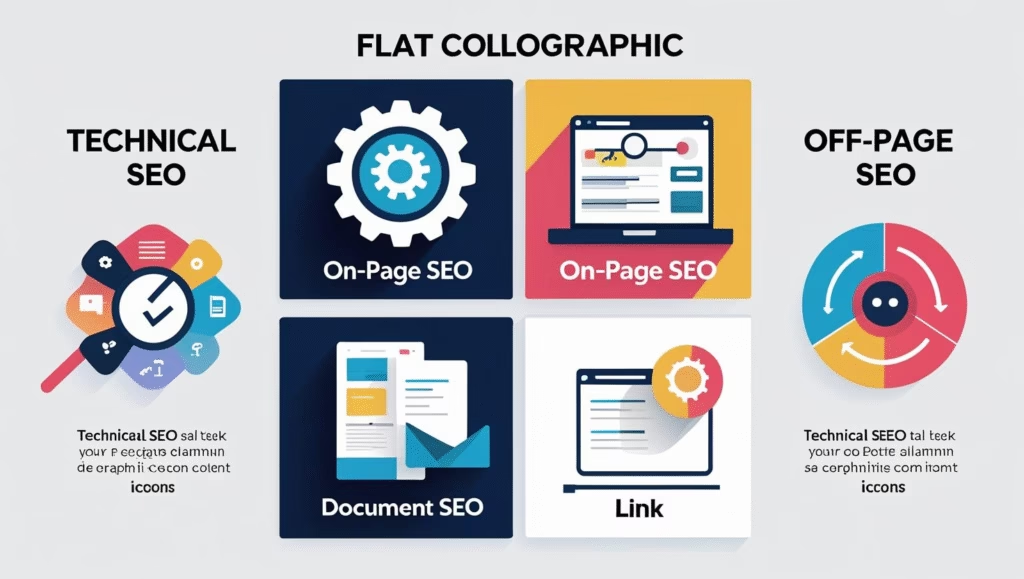
2. On-Page SEO — Making Each Page a Ranking Machine
On-page SEO focuses on optimizing the elements you control directly on your website to make each page a highly relevant answer to a search query.
Core elements of on-page SEO:
- Title Tags & Meta Descriptions: Include your target keywords naturally, but make them appealing to humans so they click.
- Headings (H1, H2, H3): Use headings to structure your content logically.
- Keyword Placement: Place keywords in titles, headings, and body content without stuffing.
- Image Optimization: Compress images for speed and add descriptive alt text.
- Internal Linking: Link to other pages within your site to spread authority and help users navigate.
Example:
If you write a blog titled “Best Coffee Beans for Espresso”, your H1 should reflect that, your H2s might discuss bean types, brewing tips, and roast levels, and your images should be tagged with descriptive alt text like “freshly roasted espresso beans”.
3. Content — The Fuel That Drives Your SEO Engine
Content is the heart of SEO. Without it, you have nothing to optimize, and no reason for people (or Google) to visit your site.
Google rewards websites that publish content people actually want and need.
Qualities of great SEO content:
- Valuable & Informative: It should solve a real problem or answer a real question.
- Engaging & Well-Written: Keep readers on the page longer by making it easy to read and enjoyable.
- Optimized for Search Intent: Understand what the searcher is trying to achieve and match your content to it.
- Comprehensive: Cover the topic in detail so the reader doesn’t need to go elsewhere.
Example:
If your audience searches for “how to train for a marathon,” you could create an in-depth guide covering training schedules, nutrition plans, common mistakes, and gear recommendations — all in one place.
4. Off-Page SEO — Building Authority and Trust Beyond Your Website
Off-page SEO is everything you do outside of your own website to improve rankings. It’s about building authority, trust, and credibility in your industry.
Main off-page SEO activities:
- Backlink Building: Getting high-quality websites to link to your content.
- Brand Mentions: Being referenced or talked about by reputable sources, even without a direct link.
- Social Signals: While social media shares aren’t a direct ranking factor, they can increase visibility and link opportunities.
- Guest Posting: Writing valuable articles for other authoritative sites in your niche.
Example:
If a popular fitness magazine links to your marathon training guide as a recommended resource, Google sees this as a strong trust signal — making it more likely your page will rank higher.
The four pillars of SEO are like four legs of a table. Remove one, and the whole thing wobbles.
To dominate Google rankings, you must balance all four pillars so they work together — technical health, optimized pages, strong content, and trusted authority.
The 3 C’s of SEO
When you’re trying to rank higher on Google, there are countless tactics and tools you can use — but they all ultimately boil down to three core principles known as the 3 C’s of SEO:
- Content
- Code
- Credibility
Mastering these three will give your SEO strategy the strong backbone it needs to succeed.
1. Content — The Substance That Attracts and Satisfies Visitors
Content is the most important of the 3 C’s because it’s the reason people visit your site in the first place. Without valuable, engaging, and relevant content, you have nothing for Google to index and nothing for users to enjoy.
What makes SEO content effective:
- Relevance: Your content should match the search intent of your target audience.
- Depth: Cover topics thoroughly so users don’t need to look elsewhere.
- Readability: Use clear headings, bullet points, and visuals to make content easy to digest.
- Originality: Offer a unique perspective or insights that competitors don’t.
- Optimization: Include relevant keywords naturally, without stuffing.
Example:
If you run a travel blog and someone searches for “best beaches in Thailand”, don’t just list 5 beaches. Give detailed descriptions, travel tips, best visiting seasons, and nearby attractions — making your guide the most comprehensive resource on the topic.
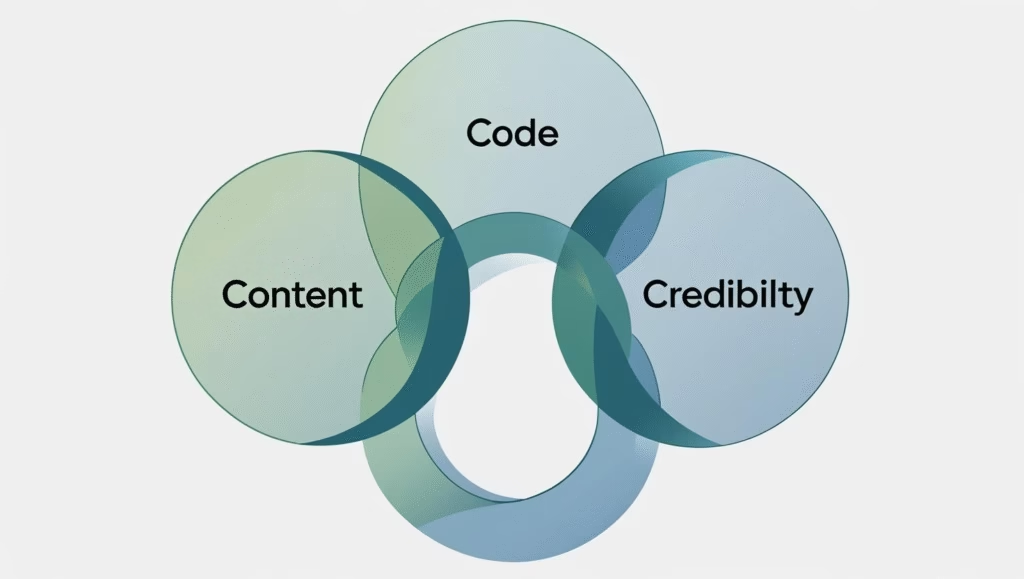
2. Code — The Technical Foundation That Search Engines Rely On
“Code” refers to the technical side of SEO — how your website is built and how easily search engines can crawl and understand it. You don’t need to be a developer to benefit from clean, optimized code, but you do need to ensure your site is technically sound.
Key coding and technical SEO factors:
- Clean HTML Structure: Proper use of header tags (H1, H2, H3) and semantic HTML helps Google understand your page hierarchy.
- Mobile Optimization: Google uses mobile-first indexing, so your site must work perfectly on smartphones and tablets.
- Fast Load Times: A slow website frustrates users and hurts rankings.
- Secure Protocol (HTTPS): Google favors secure websites with SSL certificates.
- Structured Data (Schema Markup): Helps search engines display rich snippets like ratings, FAQs, or recipes in search results.
Example:
Imagine you own an online bakery shop. If your product pages are slow to load, have broken image links, or aren’t mobile-friendly, potential customers (and Google) will quickly lose trust — costing you rankings and sales.
3. Credibility — The Trust Factor That Boosts Rankings
Credibility is how Google measures your website’s authority and trustworthiness. Even if you have great content and perfect technical SEO, without credibility signals, your rankings will struggle.
How to build SEO credibility:
- Earn High-Quality Backlinks: Links from respected sites act as endorsements for your content.
- Brand Mentions: Even without a direct link, being mentioned by reputable brands can boost trust signals.
- Positive Reviews & Ratings: Especially important for local SEO and businesses in competitive industries.
- Consistent Content Publishing: Staying active shows both users and Google that your site is maintained and relevant.
Example:
If a well-known health magazine links to your nutrition guide, Google sees this as validation that your content is reliable and valuable — helping it rank higher for related searches.
In short:
The 3 C’s of SEO — Content, Code, and Credibility — are the heart of your optimization strategy. Content gets you discovered, code helps you be understood, and credibility ensures you’re trusted enough to earn a top spot.
The 4 Types of SEO
SEO isn’t just one thing — it’s a combination of strategies that work together to improve your search rankings.
Understanding the 4 main types of SEO helps you focus on the right actions at the right time.
The four types are:
- On-Page SEO
- Off-Page SEO
- Technical SEO
- Local SEO
Let’s explore each in depth.
1. On-Page SEO — Optimizing the Content You Control
On-page SEO involves all the changes you make directly on your website to improve rankings and provide a better experience for users.
Core on-page SEO tasks:
- Keyword Optimization: Use relevant keywords naturally in titles, headings, and body text.
- Meta Tags: Write compelling title tags and meta descriptions that attract clicks.
- Content Formatting: Use headings, bullet points, and visuals to make your content scannable.
- Internal Linking: Connect related pages on your site to guide visitors and distribute ranking power.
- Image SEO: Use descriptive alt text and compress images to improve load time.
Example:
If you own a cooking blog and write a recipe for “Vegan Lasagna”, your on-page SEO should include:
- Keyword-rich title tag like “Vegan Lasagna Recipe – Easy & Delicious”
- Step-by-step instructions broken into H2 and H3 headings
- Internal links to related recipes, like “Vegan Garlic Bread”
2. Off-Page SEO — Building Authority Outside Your Website
Off-page SEO focuses on external factors that influence your site’s authority and trust in the eyes of search engines.
Core off-page SEO tactics:
- Backlink Building: Acquire links from high-authority sites in your niche.
- Guest Posting: Write articles for other sites and link back to your own.
- Social Media Engagement: Promote content on social platforms to increase visibility.
- Influencer Partnerships: Collaborate with influencers who can link to your site.
Example:
If your vegan lasagna recipe gets featured on a popular food magazine’s website with a backlink, that’s a strong off-page SEO boost.
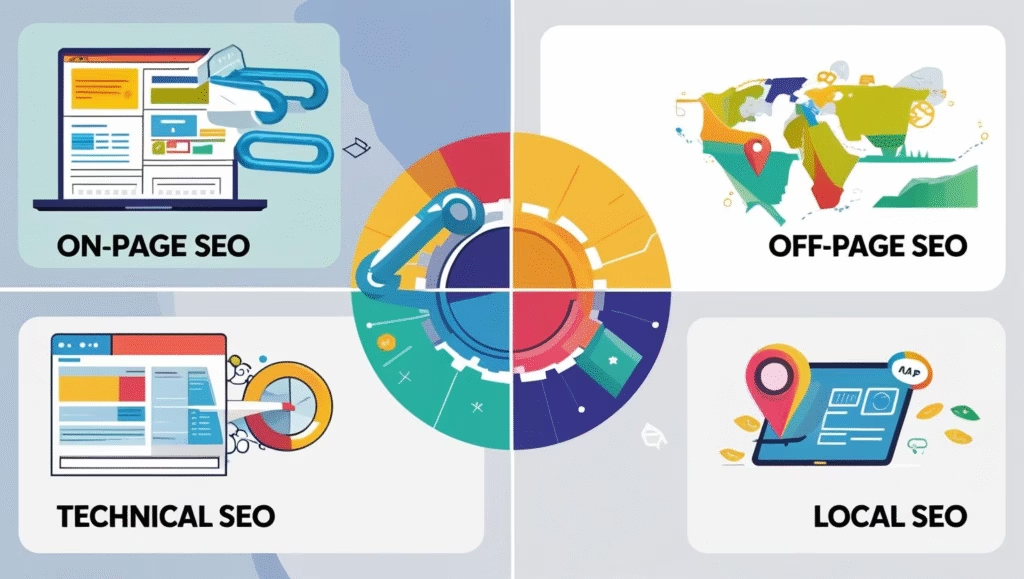
3. Technical SEO — Ensuring Your Site Is Search-Engine Friendly
Technical SEO makes sure search engines can crawl, index, and understand your website efficiently.
Core technical SEO tasks:
- Site Speed Optimization: Compress images, minify code, and use caching.
- Mobile-First Design: Ensure your site works seamlessly on mobile devices.
- XML Sitemap: Submit a sitemap to Google Search Console.
- Structured Data: Add schema markup for rich results like ratings or FAQs.
- Fix Broken Links: Remove or redirect broken pages to improve user experience.
Example:
If Google’s crawler can’t index your lasagna recipe because of a broken sitemap, no matter how good your content is, it won’t appear in search results.
4. Local SEO — Targeting Searches in a Specific Area
Local SEO helps your business appear in location-based searches — crucial for physical stores and service providers.
Core local SEO tactics:
- Google Business Profile Optimization: Keep your business hours, contact info, and reviews updated.
- Local Keywords: Use phrases like “vegan lasagna in New York City”.
- Local Citations: Ensure your business is listed in online directories.
- Customer Reviews: Encourage satisfied customers to leave positive reviews.
Example:
If you run a vegan café in New York, optimizing for “Best Vegan Lasagna NYC” can help you appear in Google’s local map pack when people search nearby.
In short:
The 4 types of SEO work together like gears in a machine. On-page SEO gets your content noticed, off-page SEO builds your reputation, technical SEO ensures search engines can find you, and local SEO connects you with nearby customers.
Building Authority & Ethical Backlinks
When it comes to SEO, authority is everything. Google wants to show searchers the most trustworthy and credible sources for any given query — and one of the strongest ways it measures that is through backlinks.
What is a Backlink?
A backlink is simply a link from one website to another.
Think of it like a vote of confidence from one site to another. If a reputable site links to yours, it’s essentially saying:
“We trust this content enough to recommend it to our readers.”
The more high-quality backlinks you have, the more credible and authoritative your site appears to search engines.
Why Backlinks Matter for SEO
Backlinks are one of Google’s top three ranking factors.
Here’s why they’re so powerful:
- Boost Domain Authority: High-quality links make your site more trusted in your niche.
- Increase Rankings: More authority means a higher chance of ranking for competitive keywords.
- Drive Referral Traffic: Visitors from other sites can discover your content directly through these links.
- Enhance Brand Visibility: Getting mentioned on respected sites increases awareness.
Example:
If a leading food blog links to your vegan lasagna recipe in an article titled “Top 10 Vegan Recipes for Beginners”, that backlink helps your page rank higher and sends interested readers your way.

The Difference Between Good and Bad Backlinks
Not all backlinks are created equal.
Good Backlinks:
- Come from relevant, high-authority websites in your niche.
- Use natural anchor text (the clickable words in a link).
- Are editorially given — meaning the site owner chose to link to you because your content is valuable.
Bad Backlinks:
- Come from low-quality, spammy websites.
- Use unnatural anchor text stuffed with keywords.
- Are bought or exchanged in large quantities — a violation of Google’s guidelines.
Google’s algorithm is smart enough to detect shady link-building tactics. Engaging in them could lead to a manual penalty that hurts your rankings.
How to Earn Backlinks Ethically
Here are proven, white-hat methods for building backlinks the right way:
- Create Link-Worthy Content:
Publish in-depth guides, original research, or unique tools that people naturally want to reference. - Guest Posting:
Write valuable articles for reputable sites in your industry and link back to your site naturally. - Broken Link Building:
Find broken links on other websites, create a similar resource, and suggest replacing the broken link with yours. - HARO (Help a Reporter Out):
Respond to journalists’ requests for expert quotes, often earning a backlink in the published piece. - Resource Pages:
Reach out to websites with resource lists in your niche and suggest adding your relevant content.
Example of Ethical Backlink Building in Action
Let’s say you run a nutrition coaching business and publish a detailed guide called:
“The Ultimate Beginner’s Guide to Plant-Based Eating”
- You pitch this guide to a popular vegan lifestyle blog — they love it and link to it as a recommended resource in their article about transitioning to veganism.
- You also guest post on a health and fitness site with a topic like “5 Mistakes New Vegans Make”, linking back to your guide for further reading.
- You use HARO to provide expert quotes for a news story on plant-based diets — the reporter links to your guide as your source.
Over time, these backlinks signal to Google that your content is authoritative, pushing it higher in search rankings.
Key Takeaway:
Backlinks are the currency of SEO authority. Earn them ethically by producing valuable content, building relationships, and contributing to your industry — and they’ll keep delivering traffic and rankings long after you’ve earned them.
Topical Authority, Intent & Content Structure
In the world of SEO, ranking for a single keyword is no longer enough.
Google now favors topical authority — websites that demonstrate deep expertise and comprehensive coverage of an entire subject area.
When your site becomes a trusted source in a niche, Google is far more likely to rank your content highly for related searches.
What is Topical Authority?
Topical authority is your credibility in the eyes of search engines for a specific subject or niche. It’s not about one good blog post — it’s about showing consistent expertise across multiple related topics.
Example:
If you have a website about plant-based diets, you can’t just write one article about “Vegan Protein Sources” and expect to rank for every vegan-related search.
Instead, you’d need a cluster of articles covering:
- Vegan meal plans
- Vegan supplements
- Plant-based recipes
- Common vegan nutrient deficiencies
- Vegan diet myths debunked
Over time, this consistent coverage builds a trust signal to Google:
“This site is the go-to authority for vegan-related topics.”

Why Search Intent Matters
Search intent is the reason behind a search query — what the user is actually looking for. Understanding it ensures your content satisfies the reader and ranks higher.
There are three main types of search intent:
- Informational:
The searcher wants to learn something.
Example: “Benefits of a vegan diet” - Navigational:
The searcher wants a specific site or brand.
Example: “PETA vegan recipes” - Transactional/Commercial:
The searcher is ready to buy or take action.
Example: “Buy vegan protein powder online”
Why it matters:
If you mismatch the intent, you won’t rank — even if your keyword is perfect.
For example, if someone searches “best running shoes for beginners” and you give them a history of running shoes instead of a list of product recommendations, they’ll bounce — and Google will notice.
Structuring Content for Topical Authority
How you organize your content matters almost as much as the content itself.
Google likes content that is well-structured, easy to read, and logically connected.
Best practices for structuring content:
- Use a “Topic Cluster” Model:
- Create a main “pillar page” covering the broad topic.
- Link to detailed subtopics (cluster pages) for in-depth coverage.
- Use Headings and Subheadings (H2, H3):
Helps both users and search engines scan your content. - Add Internal Links:
Connect related articles to keep users engaged and guide search engines. - Break Content into Digestible Sections:
Use short paragraphs, bullet points, and images for clarity.
Example of a Topic Cluster for Topical Authority
Let’s say your main topic is:
“Complete Guide to Vegan Diets” (pillar page)
You could create cluster content like:
- “Vegan Meal Plan for Beginners”
- “High-Protein Vegan Recipes”
- “How to Get Vitamin B12 on a Vegan Diet”
- “Best Vegan Supplements for Athletes”
- “Vegan Diet Myths You Should Stop Believing”
All of these articles would link back to your pillar page, reinforcing your topical authority in the vegan niche.
Key Takeaway:
To rank well in 2025, you need more than keywords — you need topic depth.
By building topical authority, matching search intent, and structuring your content clearly, you’ll become the trusted source Google rewards with higher rankings.
Technical & UX Optimization
You can have the best content in the world, but if your website is slow, clunky, or hard to navigate, both users and Google will lose interest fast.
This is where technical SEO and user experience (UX) come in — ensuring your website is search-engine-friendly, user-friendly, and conversion-friendly.
Why Technical SEO and UX Matter
Google wants to deliver results that not only answer the searcher’s question but also give them a positive browsing experience.
If your site loads slowly, breaks on mobile, or feels outdated, people will bounce — and Google will interpret that as a negative ranking signal.
Core Technical SEO Essentials
1. Core Web Vitals
Google measures three key performance metrics to evaluate page experience:
- Largest Contentful Paint (LCP): How quickly your main content loads (should be under 2.5 seconds).
- First Input Delay (FID): How quickly the site responds to a user’s first interaction (under 100ms is ideal).
- Cumulative Layout Shift (CLS): How stable your page layout is as it loads (low shifts mean a better experience).
Action Tip:
Use Google PageSpeed Insights or GTmetrix to identify and fix slow-loading elements.

2. Mobile-First Optimization
With over 60% of searches happening on mobile, Google now uses mobile-first indexing.
Your site must work perfectly on smartphones and tablets.
Action Tip:
Check your site in Google’s Mobile-Friendly Test and make sure:
- Text is readable without zooming.
- Buttons are big enough to tap.
- Images resize automatically.
3. Site Security (HTTPS)
Google gives preference to secure websites. An SSL certificate not only helps with rankings but also builds trust with visitors.
Action Tip:
If your site still shows “Not Secure” in the browser, contact your hosting provider to enable HTTPS.
4. Structured Data (Schema Markup)
Structured data tells search engines exactly what your content means — not just what it says.
It can unlock rich snippets in search results, like:
- Star ratings for products.
- Recipe details.
- Event dates.
Action Tip:
Use Google’s Structured Data Markup Helper to add schema to your pages.
5. XML Sitemap & Robots.txt
Your sitemap guides search engines to all the important pages on your site. Your robots.txt file tells them which pages to ignore.
Keeping these files clean and updated ensures smooth crawling and indexing.
Action Tip:
Submit your sitemap in Google Search Console and check for crawl errors.
User Experience (UX) Best Practices
1. Intuitive Navigation
Your menu should be simple and logical, helping users find what they want in three clicks or less.
2. Readable Design
Use easy-to-read fonts, plenty of white space, and a color scheme that matches your brand.
3. Fast-Loading Media
Compress images and use modern file formats like WebP to keep load times short.
4. Clear Call-to-Action (CTA)
Every page should guide the visitor toward the next step — whether that’s reading another article, signing up for a newsletter, or making a purchase.
What is the Golden Triangle of SEO?
The golden triangle refers to the top-left area of Google’s search results page where users’ eyes naturally focus first.
This area usually includes:
- The top organic results.
- Featured snippets.
- Paid ads (above the fold).
Why it matters:
Ranking in the golden triangle can dramatically boost click-through rates (CTR).
To get there:
- Target relevant keywords with high search intent.
- Optimize your meta titles and descriptions to entice clicks.
- Aim for featured snippets by answering questions directly in your content.
Key Takeaway:
Technical SEO gets your site seen by search engines, and great UX keeps visitors around.
By optimizing both, you create a website that Google loves to recommend — and users love to explore.
AI-Driven Search — AEO, GEO & AIO
Search is evolving faster than ever.
With the rise of AI-powered search tools like Google’s Search Generative Experience (SGE), ChatGPT, Gemini, and Perplexity, traditional SEO is no longer the only game in town.
These new systems don’t just show a list of links — they generate answers. That means your content needs to be optimized not just for Google’s algorithm but also for AI-driven engines that pull information from across the web.
This is where AEO, GEO, and AIO come in.
1. AEO — Answer Engine Optimization
What it is:
AEO focuses on structuring your content so it can be easily picked up as a direct answer by AI-driven search tools.
Why it matters:
When a user asks an AI tool a question, it often provides a summary answer at the top — sometimes without the user even clicking through to a website.
If your content is the one chosen, you still gain brand exposure and can attract engaged clicks from users who want to learn more.
How to optimize for AEO:
- Include FAQ sections in your articles.
- Answer questions clearly and concisely in the first few sentences.
- Use structured headings (H2/H3) that match common search queries.
- Mark up your FAQs and answers with schema to help search engines understand them.
Example:
If you have a blog post titled “How to Train for a Marathon”, include a short paragraph that answers the question directly:
“To train for a marathon, follow a 16–20 week plan that gradually increases mileage, incorporates rest days, and includes strength training.”
Then expand with detailed advice below — giving AI tools a clean, ready-to-quote answer.

2. GEO — Generative Engine Optimization
What it is:
GEO is about making your content appealing for citation in AI-generated summaries.
Unlike AEO, which focuses on providing direct answers, GEO is about earning mentions when AI tools create multi-source summaries.
Why it matters:
In AI summaries, your brand might be named as a source — even without a traditional link. This builds credibility and drives secondary traffic from users who want to explore further.
How to optimize for GEO:
- Publish data-driven content like studies, statistics, and original research.
- Use clear citations and authoritative references.
- Add trust signals like expert quotes, credentials, or partnerships.
- Structure information in scannable formats like bullet lists and comparison tables.
Example:
If an AI is summarizing “Best Vegan Protein Sources,” it’s more likely to cite your site if you provide:
- Nutritional breakdowns in table format.
- Sources for your data.
- A clearly labeled section like “Summary of Top 10 Vegan Protein Foods.”
3. AIO — Artificial Intelligence Optimization
What it is:
AIO is the umbrella strategy that combines AEO and GEO with traditional SEO best practices to future-proof your content for AI-driven search.
Why it matters:
As AI search engines get better at interpreting meaning and intent, they will reward content that is clear, structured, and semantically rich.
How to optimize for AIO:
- Write naturally, but with semantic depth — cover related concepts, not just keywords.
- Use entities (people, places, brands) that AI models recognize.
- Keep formatting token-efficient — AI models read better when content is clean and direct.
- Balance long-form depth with short, clear summaries for quick AI extraction.
Example:
If you publish a guide on “The Benefits of Meditation”, AIO-friendly content would include:
- A short summary paragraph of the key benefits.
- In-depth sections explaining each benefit with supporting research.
- Internal links to related topics like breathing techniques or mindfulness exercises.
Key Takeaway:
- AEO helps you become the direct answer.
- GEO helps you become the cited source.
- AIO helps you win in both while still ranking in traditional search.
If you don’t optimize for AI-driven search now, you risk losing visibility as more users rely on AI-generated results instead of scrolling through Google’s traditional listings.
Tools & Analytics Ecosystem
You can’t master SEO — or AI-driven search optimization — without data.
SEO tools are your eyes and ears: they help you understand how your site is performing, where you’re losing visibility, and what steps you can take to improve.
In 2025, the best SEO strategies combine traditional ranking data with AI-specific performance tracking so you can win in both search worlds.
Core SEO Tools You Need
1. SEMrush — The All-in-One SEO Powerhouse
- Best for: Keyword research, competitor analysis, site audits, rank tracking.
- Why it’s great: SEMrush offers a complete SEO toolkit — you can discover profitable keywords, analyze your competitors’ backlink profiles, and track your position for specific search terms.
- How to use it effectively:
- Research high-intent keywords with good traffic potential.
- Audit your site monthly to catch technical SEO issues.
- Monitor position changes to see if your optimizations are working.
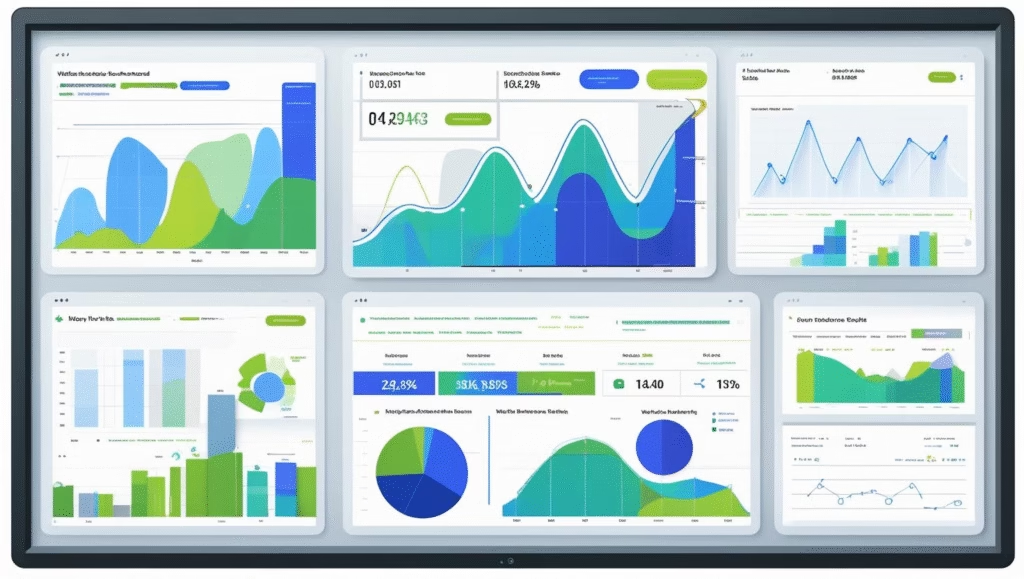
2. Ahrefs — The Backlink Intelligence Tool
- Best for: Backlink analysis, content gap analysis, competitor research.
- Why it’s great: Ahrefs has one of the largest backlink databases, making it perfect for tracking who’s linking to you and finding new link-building opportunities.
- How to use it effectively:
- Identify broken backlinks and reclaim them.
- Analyze competitor backlink profiles for link-building targets.
- Use Content Explorer to find top-performing content in your niche.
3. SurferSEO — AI-Driven Content Optimization
- Best for: On-page SEO, content structure optimization, competitive content analysis.
- Why it’s great: SurferSEO compares your content against top-ranking pages and gives data-backed recommendations to improve structure, keyword use, and readability.
- How to use it effectively:
- Run Surfer before publishing to ensure your article matches the top-ranking format.
- Adjust headings, paragraph length, and keyword placement based on Surfer’s recommendations.
4. Google Search Console (GSC) — The Free Must-Have
- Best for: Tracking Google search performance, indexing issues, and search appearance.
- Why it’s great: It’s free, direct from Google, and essential for understanding how Google sees your site.
- How to use it effectively:
- Monitor clicks, impressions, and CTR for your pages.
- Submit sitemaps for faster indexing.
- Track queries to see what’s already driving traffic — and double down on them.
5. GA4 (Google Analytics 4) — The Visitor Insights Tool
- Best for: Understanding user behavior and conversion tracking.
- Why it’s great: GA4 shows you how users interact with your site, where they come from, and what leads to conversions.
- How to use it effectively:
- Track conversion paths to see which SEO efforts lead to sales or sign-ups.
- Compare organic vs paid traffic performance.
- Analyze engagement time to gauge content effectiveness.
6. Screaming Frog — The SEO Auditor
- Best for: Technical SEO audits, broken link detection, meta tag analysis.
- Why it’s great: Screaming Frog crawls your entire site like a search engine would, helping you spot issues before they affect rankings.
- How to use it effectively:
- Run a crawl to detect 404 errors and fix them.
- Check for duplicate titles and meta descriptions.
- Identify missing alt tags and slow-loading pages.
AI Search Tracking & Optimization Tools
As AI search becomes more prominent, you also need tools that can track citations and mentions in AI-generated results — something traditional SEO tools don’t yet fully cover.
Emerging options include:
- Narrato & Clearscope: Help create AIO-friendly content with semantic coverage.
- MarketMuse: AI-assisted topic modeling to build topical authority.
- AlsoAsked: Finds question-based queries perfect for Answer Engine Optimization (AEO).
- Perplexity AI Search Mentions (manual tracking): Search for your brand in AI tools to see if it’s cited.
How to Combine These Tools for Maximum Impact
- Research & Strategy:
Use SEMrush or Ahrefs to find keyword opportunities and backlink prospects. - Content Creation:
Draft with SurferSEO for structural and keyword alignment.
Use AlsoAsked to include FAQ-style answers. - Publishing & Indexing:
Submit and monitor in Google Search Console. - Performance Tracking:
Track rankings in SEMrush/Ahrefs.
Track conversions and user flow in GA4. - Maintenance & Improvement:
Audit monthly with Screaming Frog.
Update older articles with SurferSEO recommendations.
Key Takeaway:
SEO success isn’t about having every tool — it’s about knowing which tools to use, when, and why. By combining these resources, you can monitor performance, fix weaknesses, and continuously improve — both for Google’s traditional search results and the new world of AI-driven search.
SEO + CRO — Aligning Visibility with Conversions
Getting traffic from SEO is exciting — but traffic without conversions is just a vanity metric.
Your ultimate goal isn’t just to rank high; it’s to turn visitors into customers, leads, or subscribers.
This is where CRO — Conversion Rate Optimization — comes in.
It bridges the gap between visibility (SEO) and profitability (sales or leads).
Why SEO Alone Isn’t Enough
You can rank #1 for your target keyword, but if your visitors land on your page and don’t take action, you’ve wasted a huge opportunity.
Common reasons SEO traffic fails to convert:
- Weak or missing calls-to-action (CTAs).
- Slow or confusing checkout processes.
- Content mismatch — doesn’t align with what the searcher wanted.
- Lack of trust signals like reviews, testimonials, or guarantees.
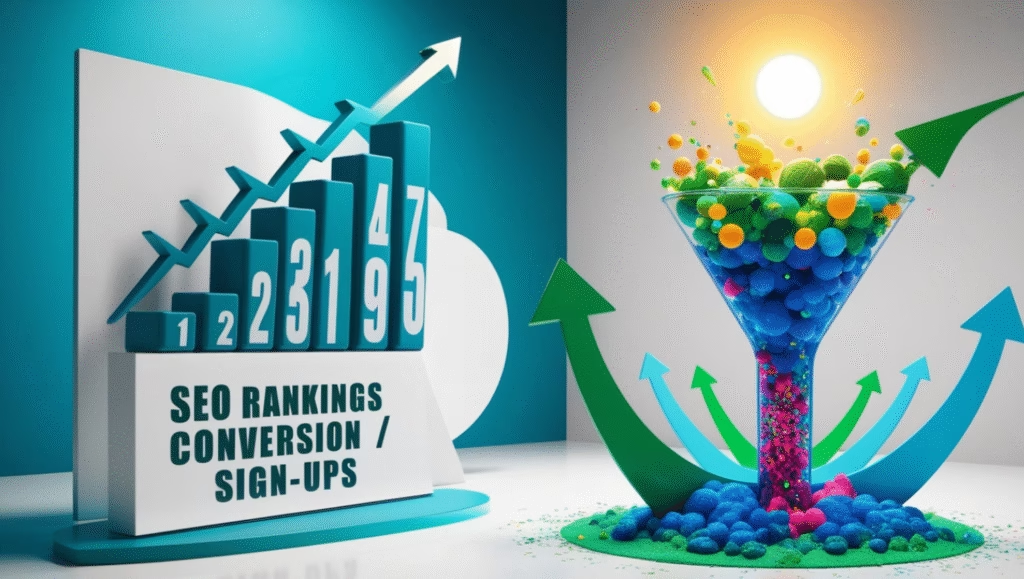
How CRO Complements SEO
CRO focuses on improving the percentage of visitors who take a desired action.
When combined with SEO, it ensures you’re maximizing the value of every visitor you attract.
Core CRO Tactics for SEO Traffic
1. Optimize Calls-to-Action (CTAs)
Your CTAs should be clear, persuasive, and visible without being intrusive.
- Use action-oriented language like “Get Started Today” or “Download the Free Guide”.
- Place CTAs strategically — above the fold, in the middle of long content, and at the end.
- Make buttons stand out with contrasting colors.
Example:
If you have a blog post titled “Best Project Management Tools for 2025”, your CTA could be:
“Compare Prices & Features — Download the Free Comparison Sheet”.
2. Match Content to Search Intent
If your page promises a solution, deliver it — and make the next step obvious.
- Informational intent → Offer a downloadable guide or newsletter sign-up.
- Transactional intent → Highlight your product/service with a “Buy Now” or “Book a Demo” button.
Example:
If someone searches “Affordable SEO services”, they expect pricing details — not just a generic SEO article.
3. Build Trust & Credibility
People buy from brands they trust.
- Add customer testimonials, reviews, and star ratings.
- Show logos of clients you’ve worked with.
- Display trust badges like “Money-Back Guarantee” or “Secure Checkout.”
Example:
A digital marketing agency could show “Trusted by 500+ Businesses Worldwide” alongside case study links.
4. Simplify the User Journey
Every extra click or form field reduces conversion rates.
- Limit forms to essential fields.
- Make checkout or sign-up quick and intuitive.
- Remove unnecessary distractions from high-conversion pages.
5. A/B Test Landing Pages
What works for one business might not work for another.
Test different:
- Headlines
- Button text
- Layouts
- Images
Example:
Test whether “Get Your Free Trial” converts better than “Start Your 14-Day Free Trial”.
Measuring CRO Success
Track key conversion metrics:
- Conversion Rate: % of visitors who take your desired action.
- Lead Volume: Number of new leads generated.
- Revenue per Visitor (RPV): Average revenue per site visitor.
- Bounce Rate: % of visitors leaving without interacting.
Use tools like:
- Google Analytics 4 (GA4) — Tracks conversion paths.
- Hotjar — Shows heatmaps of where users click and scroll.
- Optimizely or VWO — Run A/B tests.
Key Takeaway:
SEO gets people to your site. CRO makes sure they do something valuable once they’re there.
The businesses that win online are the ones that treat SEO and CRO as a single, unified strategy — not two separate things.
Paid Search Integration — PPC & SEM
SEO is a long-term investment. It builds sustainable traffic and brand authority — but it can take months to see significant results.
If you want immediate visibility while your SEO is still ramping up, pairing it with paid search advertising can be a powerful strategy.
This is where PPC and SEM come in.
What is PPC in SEO?
PPC (Pay-Per-Click) is a form of paid search advertising where you bid on specific keywords to have your ad appear at the top (or bottom) of the search results page.
You only pay when someone clicks on your ad — hence the name.
Why PPC is valuable alongside SEO:
- Instant visibility for high-value keywords you don’t yet rank for organically.
- Control over targeting, including location, device type, time of day, and audience interests.
- Data insights from ad performance that can inform your SEO strategy.
Example:
If you’re launching a new online course, SEO may take months to rank your course page organically. Running a Google Ads PPC campaign for “best digital marketing course online” can put you in front of your audience immediately.
What is SEM?
SEM (Search Engine Marketing) is the umbrella term for both:
- SEO — Organic traffic from search engines.
- PPC — Paid traffic from search ads.
Think of it like this:
SEO is the free, long-term traffic engine.
PPC is the paid, short-term accelerator.
SEM is the full strategy that uses both to dominate search visibility.

Why Combine PPC and SEO?
- Full SERP Coverage
When your ad appears above your organic listing, you own more real estate on the search results page — increasing click chances. - Faster Keyword Testing
Use PPC to quickly test which keywords drive conversions. Then target the winners with SEO for long-term rankings. - Competitive Defense
PPC ensures your brand stays visible for your top keywords — even if competitors outrank you organically. - Remarketing Opportunities
Combine organic traffic from SEO with paid remarketing ads to bring back visitors who didn’t convert the first time.
Best Practices for PPC + SEO Integration
1. Share Keyword Data
- Use Google Ads search term reports to find high-converting keywords for SEO.
- Use SEO keyword rankings to identify terms worth targeting in PPC.
2. Align Messaging
- Keep ad copy, meta titles, and landing page messaging consistent for stronger brand recognition.
3. Optimize Landing Pages
- Ensure PPC landing pages follow CRO best practices (from Section 11).
- Use SEO-friendly structures so those pages can rank organically later.
4. Monitor ROI
- Track Cost Per Acquisition (CPA) for PPC.
- Compare with organic conversions to guide future budget allocation.
Example of PPC + SEO in Action:
- A local dentist wants to rank for “emergency dental services near me”.
- They run Google Ads PPC for that keyword to appear instantly.
- Meanwhile, they invest in SEO by optimizing their Google Business Profile and creating content around dental emergencies.
- Over time, the organic SEO work starts bringing in free leads, and they can reduce PPC spend — but still run ads for extra visibility.
Key Takeaway:
PPC is not a replacement for SEO. It’s a powerful partner.
While SEO builds long-term authority, PPC ensures you have visibility and conversions right now.
Together, they give you the full spectrum of search dominance — organic and paid.
Search Result Basics — Understanding SERPs
When you type a query into Google (or any other search engine), the page you see next is called the SERP — the Search Engine Results Page.
If you want to dominate search, you need to understand the anatomy of a SERP — because it’s more than just a list of links.
What Does SERP Stand For?
SERP stands for Search Engine Results Page.
It’s where search engines display the most relevant results for a user’s query.
A SERP is dynamic, meaning it changes based on:
- The searcher’s location.
- Their search history and preferences.
- The type of query (informational, navigational, transactional).
- Whether the search engine believes a special SERP feature would be helpful.
The Main Components of a SERP
1. Organic Listings
These are the traditional, unpaid search results that appear because the search engine considers them the most relevant.
Example:
Searching “best hiking boots” will show blog posts, guides, and store pages optimized for that keyword.
2. Paid Search Ads
PPC (Pay-Per-Click) ads usually appear at the top and/or bottom of the SERP, marked with a small “Ad” label.
Example:
If you search for “buy running shoes online”, you’ll likely see brand ads from Nike, Adidas, or Amazon at the top before organic results.

3. Featured Snippets
Also called Position Zero, featured snippets provide a direct answer to a query without the user needing to click a link.
Formats include:
- Paragraph summaries
- Numbered lists (steps)
- Bulleted lists
- Tables
Example:
Searching “how to change a flat tire” may show a quick 5-step guide above all results.
4. People Also Ask (PAA) Boxes
These are expandable boxes showing related questions and short answers pulled from web pages.
Example:
Searching “SEO basics” might trigger questions like:
- What is SEO and how it works?
- What are the 4 types of SEO?
5. Local Pack (Map Pack)
A block showing Google Maps listings for local businesses relevant to the search.
Example:
Searching “coffee shop near me” will show a map with nearby cafés, their ratings, and contact details.
6. Shopping Results
A carousel of product listings, usually with prices, reviews, and images.
Example:
Searching “buy DSLR camera” shows a horizontal scrolling list of cameras from various retailers.
7. Knowledge Panels
An information box (usually on the right side of desktop SERPs) that provides quick facts about a brand, person, place, or topic.
Example:
Searching “Albert Einstein” shows a biography, birth/death dates, and key facts.
Why Understanding SERPs is Critical for SEO
- Visibility Opportunities: Knowing which SERP features appear for your keywords lets you target them.
- Click-Through Rate (CTR) Impact: Featured snippets, ads, and local packs can push organic results down.
- Content Strategy Alignment: If your target keyword triggers a video carousel, you should consider making a video.
- Voice Search Optimization: Featured snippets often power voice assistant answers.
How to Optimize for SERP Features
- For Featured Snippets:
- Answer questions in the first 2–3 sentences of your content.
- Use structured data to help search engines understand your content.
- For Local Pack:
- Optimize your Google Business Profile.
- Collect positive reviews and keep contact details updated.
- For PAA Boxes:
- Include FAQ sections in your content.
- Target related questions as subheadings.
- For Shopping Results:
- Use Google Merchant Center and structured product data.
Key Takeaway:
The SERP is no longer just “ten blue links.” It’s a multi-format display of answers, ads, and media.
To dominate search, you must understand which features your keywords trigger and optimize your content to appear in them.
The Layers of SEO
SEO isn’t just a single tactic — it’s a multi-layered strategy where each layer builds on the previous one.
Think of it like building a skyscraper: you can’t put up the penthouse before the foundation is solid.
In 2025, the most successful SEO strategies are built on four interconnected layers:
- Foundational Layer — Core SEO Basics
- Optimization Layer — On-Page and Technical Enhancements
- Authority Layer — Backlinks, Trust, and Brand Signals
- AI Optimization Layer — Preparing for AI-Driven Search
Let’s break them down.
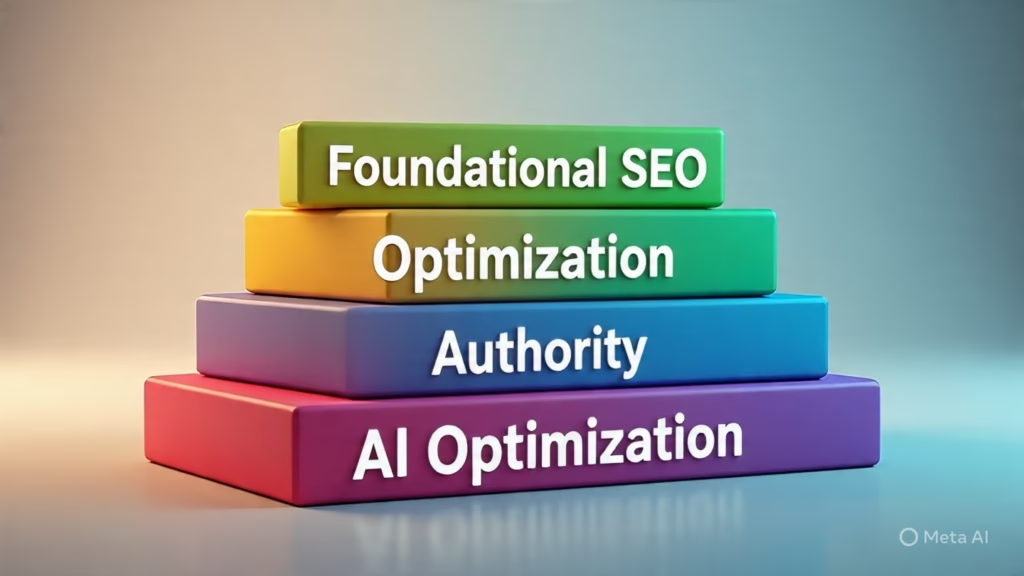
1. Foundational Layer — Core SEO Basics
This is your SEO ground floor. Without it, nothing else will work.
Key elements include:
- Keyword Research: Identifying the terms your audience actually searches for.
- On-Page SEO Basics: Proper titles, meta descriptions, and headings.
- Mobile-Friendliness: A responsive design that works on all devices.
- Site Structure: Clear navigation and logical URL hierarchy.
- Secure Protocol (HTTPS): Encrypts your site for user trust and Google preference.
Example:
If you run an online bakery, this layer ensures Google understands you’re a bakery, where you operate, and what products you offer.
2. Optimization Layer — On-Page and Technical Enhancements
Once the foundation is in place, you fine-tune your site for both users and search engines.
Key elements include:
- Page Speed Optimization: Faster load times reduce bounce rates.
- Internal Linking: Connects related pages to spread ranking power.
- Content Refinement: Optimizing existing pages for better keyword targeting.
- Image Optimization: Compress images and add descriptive alt text.
- Technical Fixes: Repair broken links, update sitemaps, and ensure proper indexing.
Example:
If your bakery blog has a post on “Best Cupcakes in New York”, this layer ensures it loads fast, uses internal links to your ordering page, and has optimized headings for maximum visibility.
3. Authority Layer — Backlinks, Trust, and Brand Signals
Even with perfect on-page and technical SEO, you still need authority for competitive rankings.
This is where off-page SEO and trust-building come in.
Key elements include:
- Backlink Acquisition: Earning links from relevant, reputable websites.
- Brand Mentions: Getting cited in media or industry publications.
- Positive Reviews: Encouraging satisfied customers to leave feedback.
- Social Signals: Building engagement on social platforms to amplify content reach.
Example:
If a top food magazine links to your cupcake article in a “Best Desserts in NYC” roundup, your authority skyrockets — boosting your rankings.
4. AI Optimization Layer — Preparing for AI-Driven Search
This is the future-facing layer.
As AI-powered tools like Google’s Search Generative Experience (SGE), ChatGPT, and Perplexity change how people search, your content needs to be machine-readable and answer-ready.
Key elements include:
- Answer Engine Optimization (AEO): Structuring content to answer specific questions clearly.
- Generative Engine Optimization (GEO): Providing authoritative, well-cited information that AI can use in summaries.
- Semantic SEO: Covering related concepts to show deep topical expertise.
- Schema Markup: Using structured data so AI understands your content’s context.
Example:
If someone asks ChatGPT “What’s the best cupcake shop in New York?”, your bakery is cited because your content answers the question directly, includes structured data, and has authoritative backlinks.
Key Takeaway:
- You can’t skip layers — each builds on the previous one.
- The Foundational Layer gets you started.
- The Optimization Layer improves performance.
- The Authority Layer gets you competitive rankings.
- The AI Optimization Layer future-proofs your SEO.
FAQs
These are some of the most frequently asked questions about SEO, answered clearly so you can put the concepts into action.
1. What are the Four Pillars of SEO?
The four pillars of SEO are:
- Technical SEO — Ensuring your site is crawlable, fast, and mobile-friendly.
- On-Page SEO — Optimizing content, titles, headings, and meta descriptions.
- Content — Creating valuable, high-quality information that matches search intent.
- Off-Page SEO — Building authority through backlinks, brand mentions, and trust signals.
Together, these pillars form the complete framework for ranking success.
2. What is Core SEO?
Core SEO refers to the fundamental best practices that keep your site competitive in search results.
It includes:
- Researching keywords based on search intent.
- Optimizing on-page elements like titles and headings.
- Creating helpful, relevant content.
- Ensuring technical elements (speed, mobile responsiveness, security) are in place.
Without core SEO, even the most advanced strategies won’t deliver consistent rankings.
3. What are the 3 C’s of SEO?
The 3 C’s are:
- Content — The information you publish to attract and satisfy visitors.
- Code — The technical framework that ensures search engines can understand your site.
- Credibility — The trust you earn through backlinks, brand authority, and positive reviews.
These three factors determine whether your site is discoverable, understandable, and trustworthy in the eyes of search engines.
4. What are the 4 Types of SEO?
The four types of SEO are:
- On-Page SEO — Optimizing elements directly on your website.
- Off-Page SEO — Activities outside your site that influence rankings, like backlinks.
- Technical SEO — Backend improvements for speed, indexing, and structure.
- Local SEO — Optimizing for location-based searches and map results.
Each plays a unique role in attracting the right traffic.
5. What is the Golden Triangle of SEO?
The golden triangle refers to the top-left corner of a search engine results page (SERP) where users’ eyes focus first.
Ranking here — through organic listings, ads, or featured snippets — dramatically increases click-through rates.
6. What is the Key Concept of SEO?
The key concept is relevance and authority.
Google rewards content that:
- Matches the search intent of the user.
- Comes from a source it trusts.
- Is clear, useful, and accessible.
7. Which Tool is Best for SEO?
It depends on your needs:
- SEMrush — Best all-in-one SEO toolkit.
- Ahrefs — Best for backlink research.
- SurferSEO — Best for content optimization.
- Google Search Console — Best free tool for performance tracking.
8. What Does SERP Stand For?
SERP = Search Engine Results Page — the page that displays results after a user enters a search query.
It includes organic results, ads, featured snippets, local packs, and more.
9. What are the Layers of SEO?
The four layers of SEO are:
- Foundational Layer — Core SEO basics.
- Optimization Layer — On-page and technical enhancements.
- Authority Layer — Backlinks and brand trust.
- AI Optimization Layer — Preparing for AI-driven search.
10. What is a Backlink?
A backlink is a link from one website to another.
It acts as a vote of confidence in your content.
High-quality backlinks from trusted sites can significantly improve your rankings.
11. What is PPC in SEO?
PPC (Pay-Per-Click) is a form of paid search marketing where you pay every time someone clicks your ad.
While SEO focuses on organic traffic, PPC can give you immediate visibility for targeted keywords.
12. What is SEM?
SEM (Search Engine Marketing) is the broader term that includes both:
- SEO — Organic search optimization.
- PPC — Paid search advertising.
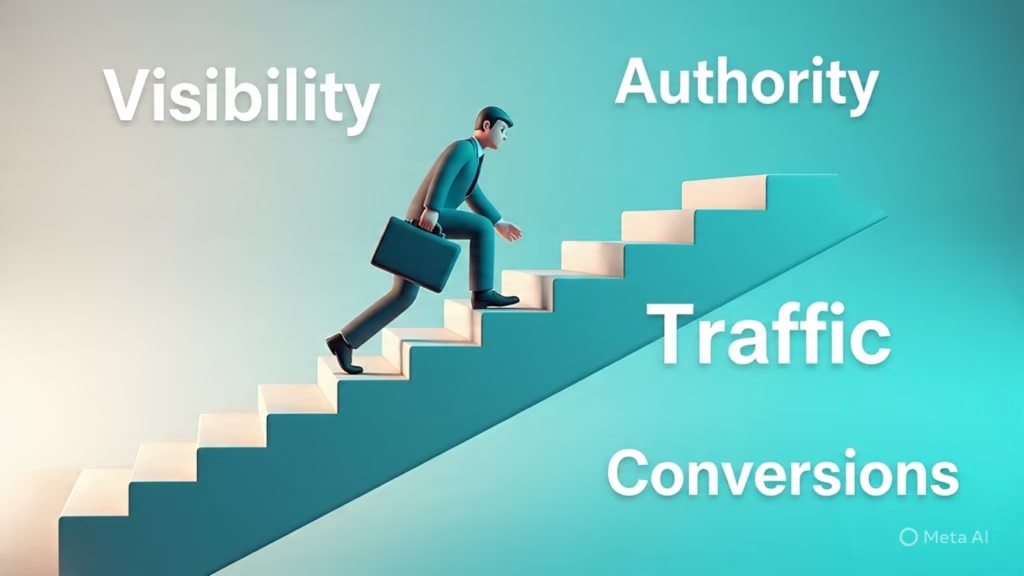
Conclusion & Key Takeaways
In 2025, SEO is no longer just about sprinkling keywords into your content and hoping for the best.
It’s about mastering core SEO fundamentals, layering on advanced optimization techniques, and adapting to the AI-driven future of search.
You’ve now seen how the four pillars of SEO, the 3 C’s, the different SEO types, and the SEO layers all work together to help your website dominate Google rankings.
Your SEO Success Formula
- Lay the Foundation
- Get your core SEO right: keyword research, mobile-friendly design, fast load times, and secure hosting.
- Optimize Relentlessly
- Fine-tune your on-page SEO, fix technical issues, and make your content easy for both users and search engines to understand.
- Build Authority
- Earn backlinks, get brand mentions, and develop topical expertise so Google recognizes you as a trusted voice in your niche.
- Future-Proof with AI Optimization
- Implement AEO, GEO, and AIO strategies so your content is visible in AI-generated results, not just traditional search listings.
- Convert Your Traffic
- Use CRO best practices to turn visitors into leads, customers, or subscribers. SEO traffic is only valuable if it drives results.
Why Acting Now Matters
Search engines are evolving at lightning speed. Those who adapt early will be the ones reaping the rewards, while late adopters will be fighting to catch up.
Your competitors are not just other websites — they’re AI models, video platforms, and search features that are all vying for your audience’s attention.
If you’re not optimizing for both Google’s current algorithms and AI-powered search, you risk being invisible tomorrow.
Final Advice
SEO is a long game — but one with compounding rewards.
If you stay consistent, measure your progress, and refine your approach, your rankings will improve, your traffic will grow, and your brand will stand out as an authority in your industry.
Ready to dominate Google rankings in 2025?
Start today — implement what you’ve learned in this guide and watch your online presence transform.
